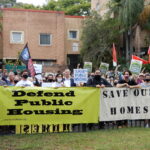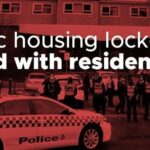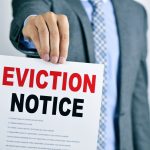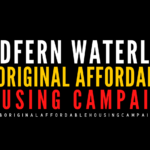The Homeless were Housed in Hotels for COVID, But Are Back on the Streets as Governments Sell-Off Public Housing
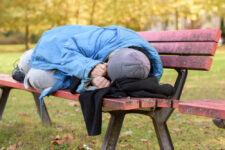
With the onset of the continuing COVID-19 pandemic in early 2020, it became apparent that there was an issue with Australia’s ever-increasing homeless population being able to self-isolate to prevent virus contraction and transmission.
This included concerns around rough sleepers, as well as the urban street homeless living within temporary accommodation that involved the sharing of rooms, dormitories and bathroom facilities.
A just released UNSW and ACOSS report found four state governments – NSW, Queensland, Victoria and SA – were able to rapidly activate programs providing safe temporary accommodation to 40,000 rough sleepers and other homeless people from late March 2020.
Most of the emergency accommodation (EA) consisted of hotel rooms, although the Queensland government secured a nine month lease on a student accommodation block.
In these circumstances, government funding covered rooms, meals and support provided to the “hotel homeless” by nongovernment organisations.
However, despite being able to mobilise this sort of response during the crisis – as well as policy action taken at the time by state governments that aimed at transiting these people into longer-term secure housing – the majority of them ended up back out on the streets.
On the street again
The COVID-19: Rental Housing and Homelessness Impacts report covers the six month period ending on 30 September 2020. It outlines that on any given night in Australia there are around 8,000 people sleeping rough nationwide and thousands more in “overcrowded or insanitary buildings”.
The report authors note that the pandemic emergency accommodation operations “were unprecedented in scale, but not in principle”, as “assertive outreach and temporary housing placements en route to longer-term tenancies” had been more common prior to 2020.
Based on unpublished data supplied by the four state governments, the researchers ascertained that in three of these states, 48 percent of those staying in accommodation were former rough sleepers, and the rest were from unsafe temporary housing.
All four states made “substantial efforts and commitments” to place these people into longer-term tenancies. However, just under a third of rough sleepers and only a fifth of the overall hotel homeless population ended up being placed in longer-term accommodation.
“At the same time, for a significant proportion of other EA departees, this will likely have involved a return to homelessness,” the report notes, and “in some instances a resumption of rough sleeping”.
Privatising the solution away
The report concludes that a major reason the four state governments could not place more of the homeless into long-term accommodation was “the limitations posed” by the “grossly inadequate availability of social housing”.
The issue around a lack of social housing in NSW is being exacerbated as rather than building more, the state government is currently demolishing existing social housing estates and allowing private entities to build apartment blocks consisting of 70 percent private dwellings and 30 percent social.
As one of the COVID report authors, Dr Alistair Sisson, recently told Sydney Criminal Lawyers the “chronic need” for social housing can’t simply be solved by knocking down existing stock and replacing it with a handful more units than there previously were.
The academic explained that the “conservative estimate” for the social housing waitlist in this state is 50,000 applications, so that many new units are needed to see the housing crisis abated.



